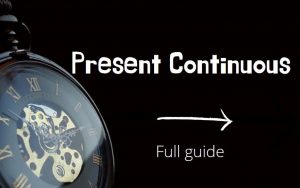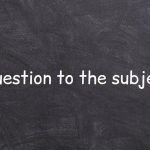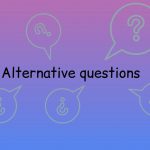The Present Perfect is a very important tense in English. You need to understand the formula and the logic of this tense.
Not all languages have an analog of Present Perfect, so for some students, the Present Perfect formula seems difficult to get. But in fact, it is not difficult at all!
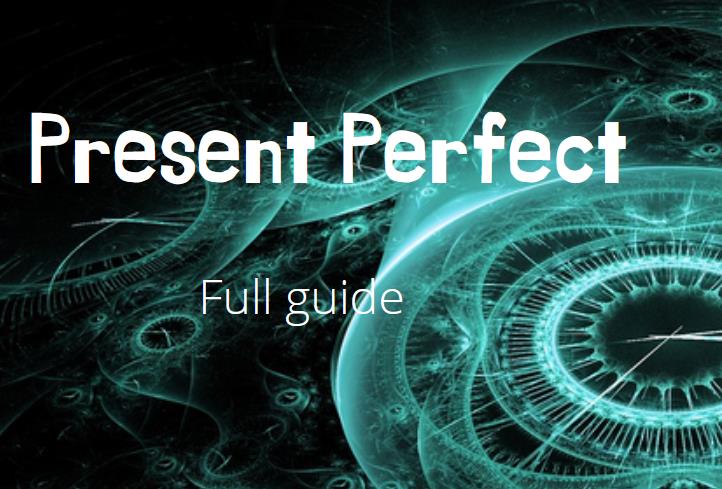
The logic of Present Perfect
The logic of the Present Perfect is that this tense shows us that some action has ALREADY been done (already ended, already finished).
The Present Perfect refers to the present although the action happened in the past. But the result of the action that has already ended is the most important thing that we express using the Present Perfect.
It is very important to understand why in some cases we use the Present Perfect but not the Past Simple.
Using the Past Simple, we are talking about what happened:
I was a kid 10 years ago.
She had another job before.
We played football last summer.
Using the Present Perfect, we talk not about WHAT happened or WHEN it happened, but the fact that it has already HAPPENED.
Do you want to watch the movie Titanic?
No, thanks. I have already watched it.
See? We are not using the Past Simple, we are not saying:
I watched the movie Titanic five years ago.
Because we don’t need to talk about the past. We want to say that NOW, at the time of the speaking, the movie Titanic has already been WATCHED. And we have this result now “I have watched the Titanic”.
When we see dinner on the table, we are saying:
Mom has prepared dinner.
We use the Present Perfect to show a connection with the present because we see food on the table.
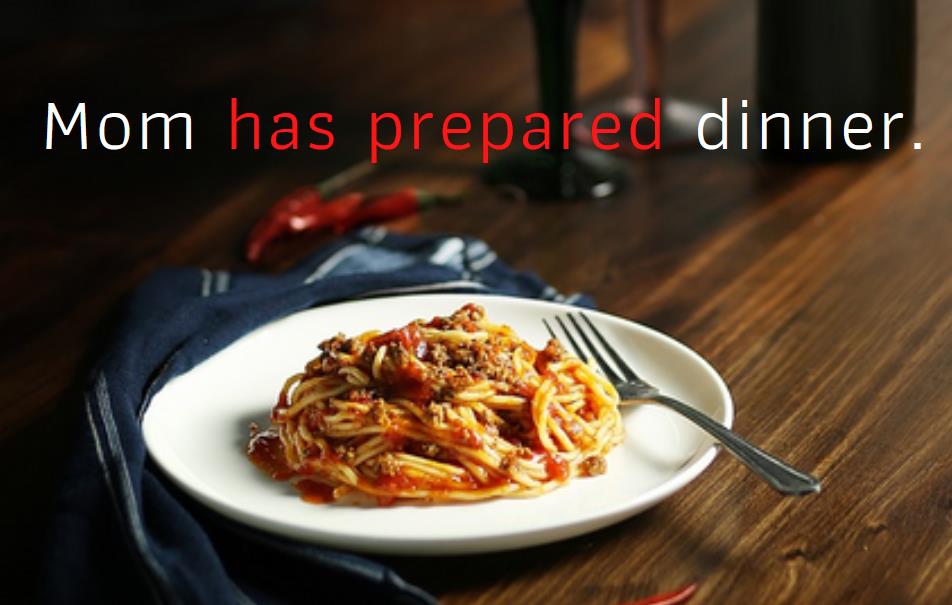
John is standing at the door of his apartment saying:
I cannot open the door. I have lost my keys!
If we use the Past Simple it means that John has lost his keys in the past.
I lost my kyes.
That event has no connection with the present. When we use the Past Simple, we do not express actions the result of which is associated with the present.
In the Past Simple we express actions that occurred and ended in the past. The result of the actions has no connection to the present.
When we use the Present Perfect, we describe actions, the result of which is related to the present.
I HAVE lost my keys.
Imagine the story, Jessica asks John:
John, do you want to eat?
Let’s imagine that John ate and he is not hungry. He can say this in two ways:
The Past Simple: I ate.
The Present Perfect: I have eaten.
Which of these options should you use in this situation? Both sentences mean that John ate. And he did it not now. It was in the past.
In fact, you can use both options, but the one written using the Present Perfect is more correct. Why?
The Past Simple describes actions that have occurred in the past. The Present Perfect describes actions that happened in the past, but the result of them is related to the present.
I ate (the Past Simple) only tells Jessica that John ate in the past. Of course, Jessica can guess what John means. Of course, Jessica understands that John is not hungry right now.
I have already eaten (the Present Perfect) shows not just the fact that John ate in the past, but that he NOW has the RESULT of this action and this result AFFECTS the situation that is happening to John now. Thus, Jessica understands for sure that John is not hungry. Because he HAS eaten.
To Have
There is one very important verb in the Present Perfect. This is the verb to have. This verb means that someone or something has something. Now look at the sentence:
I have watched the movie Titanic.
Pay attention to the verb “have” without which the formation of the Present Perfect is impossible.
In this example, there is an emphasis not on the action but on the result. HAVE WATCHED means that now we HAVE the result of this action (WATCHED).
It doesn’t matter when and under what circumstances the action took place. After all, we are not talking about this, but about the fact that at the moment of speaking we “have” watched this film.
Think about the verb to have. For example, in the Present Simple we use the verb have to say that we have something:
I have two brothers.
I have a car.
But in the Present Perfect, we add to the verb to have a verb in the third form.
So we use the Present Perfect to show that we have something but that something WAS DONE / FINISHED IN THE PAST.
I have already watched the movie Titanic.
I have already eaten.
I have already spoken to him.
I have already read this book.
Do you see why the Present Perfect refers to the present and not to the past?
The Present Perfect, as a kind of bridge, unites what happened in the past and how we talk about it in the present.
Now look at a few more examples, but as you read the examples and the explanations, remember that:
The Past Simple is when an action happened in the past. The result of this action has nothing to do with the present.
The Present Perfect is when an action happened in the past, but its result is associated with the present.
John lost his keys.
It just means that John lost his keys in the past. It could have happened a year ago or 5 years ago. It has no connection with the present.
John has lost his keys.
It means John cannot open the door! Why? Because this sentence is written in the Present Perfect. The lost key action has a connection with the present. It doesn’t matter when exactly John lost the key. Maybe an hour ago, or maybe it happened just a minute ago. The important thing is that this is exactly the loss that has a connection with the present. He cannot enter his apartment. He HAS lost his keys.
Imagine that John is preparing a meal. Suddenly John wanted to tell a story about how when he was a child he was cooking and dropped an egg on the floor. In this case, John should use the Past Simple:
When I was a kid, I cooked and dropped an egg on the floor.
John used the Past Simple to talk about what happened in the past and there is no connection with the present. It’s just a story.
Now imagine that John is now dropping the egg on the floor. John shouts:
I have dropped the egg!
To say this, John used the Present Perfect. Because the action has already taken place, John wants everyone to know, this is not a story from the past. This is what has to do with the present. John now has the result of what happened. John can’t cook the food right now because he dropped the egg.
What is the Present Perfect Formula? How to form sentences?
Despite the fact that the Present Perfect seems difficult to understand, the formula of this tense is quite simple. For the formation of the Present Perfect, we need:
- Auxiliary verb. This is the verb to have. To have plays a very important role in the Present Perfect.
Remember how to have changes in the present:
- I have
- He has
- She has
- It has
- We have
- They have
- You have
- The third form of the main verb. This is another essential component for the formation of the Present Perfect.
Remember, if the verb is regular, then its third form is formed in the same way as the past “simple” form. We just add the -ed ending:
- work – worked
- jump – jumped
- clean – cleaned
- talk – talked
| base form | -ed form |
|---|---|
| work | worked |
| jump | jumped |
| clean | cleaned |
| talk | talked |
If the verb is irregular, then we need to memorize its third form or look in the table of irregular verbs.
- run – run
- write – written
- speak – spoken
- do – done
- have – had
| base form | 3d form |
|---|---|
| run | run |
| write | written |
| speak | spoken |
| do | done |
| have | had |
We form affirmative (positive), negative and interrogative (question) sentences in the Present Perfect using the auxiliary to have. The main verb always remains unchanged.
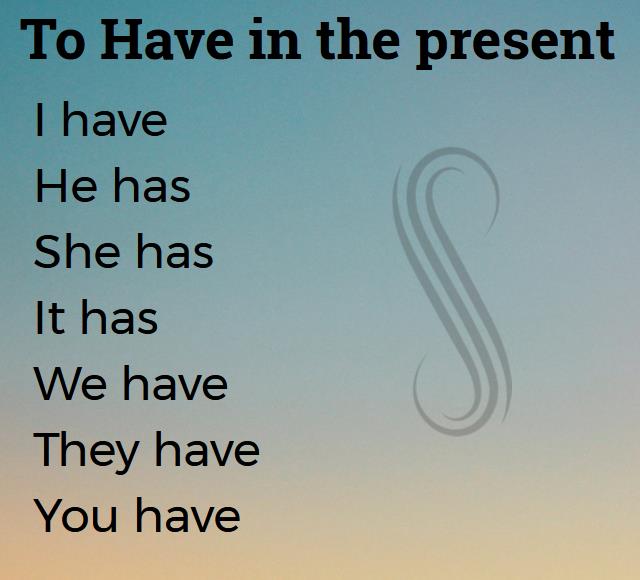
How to form Affirmative (Positive) Sentences in Present Perfect
To form an affirmative (positive) sentence, we put the subject first. Then we put the right form of the verb to have. Then the third form of the main verb. Then the rest of the sentence, if needed.
The Present Perfect formula looks like this:
Subject (I, you, they, John, friends, dog) + have/has + the third form of the main verb (seen, gone, read, spoken) + the rest of the sentence.
You have said all we need to know.
I have written the book.
They have done the homework.
How to form Interrogative (Question) Sentences in Present Perfect
To form an interrogative (question) sentence, we start with the right form of the verb to have. Then we put the subject after which we put the third form of the main verb.
have/has + subject (I, you, they, John, friends, dog) + the third form of the main verb (seen, gone, read, spoken) + the rest of the sentence.
Examples:
Have you done the job?
Has she visited her friends?
How to answer questions correctly?
For a short answer, we use the words Yes and No, the subject, and the right form of the verb to have. If the answer is negative, we add the negative not after the verb to have.
Short positive answer:
YES + Subject (I, you, they, John, friends, dog) + have/has
Have you done the job?
Yes, I have.Has she visited her friends?
Yes, she has.
Short negative answer.
NO + Subject (I, you, they, John, friends, dog) + have/has + not
Have you done the job?
No, I have not.Has she visited her friends?
No, she has not.
To form a full answer, we need the word Yes or No, the Subject, the right form of the verb to have. Then we repeat the question as an affirmative (positive) sentence. Remember, if the answer is negative, then after have we add the negative not.
Full positive answer:
YES + Subject (I, you, they, John, friends, dog) + have/has + the part of the question in the affirmative (positive) form.
Have you done the job?
Yes, I have done the job.Has she visited her friends?
Yes, she has visited her friends.
Full negative answer:
NO + Subject (I, you, they, John, friends, dog) + have/has + not + the part of the question in the negative form.
Have you done the job?
No, I have not done the job.Has she visited her friends?
No, she has not visited her friends.
What is the Present Perfect formula for Negative Sentences?
To form a negative sentence, we put the subject, after which we put the right form of the verb to have. We add the negative not to the verb to have. After that, we put the main verb in the third form.
Subject (I, you, they, John, friends, dog) + have/has + the third form of the main verb (seen, gone, read, spoken) + the rest of the sentence.
I have not written the letter yet.
He has not asked her out.
Abbreviation (short form) in Present Perfect
As you may have guessed, native English speakers rarely use such a long structure as “I have / I have not” without an abbreviation.
In the Present Perfect, we use the next abbreviations: we contract the verb to have in affirmative (positive) sentences and the verb to have and the negative not in negative sentences.
| Full | Short |
|---|---|
| I have | I’ve |
| He has | He’s |
| She has | She’s |
| It has | It’s |
| We have | We’ve |
| They have | They’ve |
| You have | You’ve |
Abbreviation in affirmative (positive) sentences:
- I have = I’ve
- He has = He’s
- She has = She’s
- It has = It’s
- We have = We’ve
- They have = They’ve
- You have = You’ve
She‘s been there.
They‘re gone now.
NOTE: We do not contract Has in the present with subjects He, She, It if Has is the main verb in the sentence. Because it looks confusing. It looks the same as the contraction of the verb to be.
He is a robot = He’s a robot.

Abbreviation in negative sentences:
- I have not = I haven’t
- He has not = He hasn’t
- She has not = She hasn’t
- It has not = It hasn’t
- We have not = We haven’t
- They have not = They haven’t
- You have not = You haven’t
| Full | Short |
|---|---|
| I have not | I haven’t |
| He has not | He hasn’t |
| She has not | She hasn’t |
| It has not | It hasn’t |
| We have not | We haven’t |
| They have not | They haven’t |
| You have not | You haven’t |
We haven’t known that.
She hasn’t told us anything yet.
When we use Present Perfect
Let’s take a look at the most common cases when we use the Present Perfect.
Case 1.
We use Present Perfect when we talk about actions or events that happened in the past but their result affects the present:
Thank you, I am not hungry, I’ve already eaten.
Let’s choose another movie. Because I’ve already watched this one.
Case 2.
We use Present Perfect when we do not know or do not tell the time when an action occurred, because the result of this action is more important than the time when exactly it happened.
He has met this person before.
We will not go with you because we have already been to the amusement park.
Case 3.
When an action took place in a period that has not yet ended. For example, if we are talking about what happened in the morning, but the morning is not over yet. That is, we are still in the time that we are talking about.
I have already spoken to him this week. (This week is not over yet)
I have done a lot of work today! (I’m talking about this today. Today is an unfinished period)
Case 4.
We also use Present Perfect when we talk about our personal experiences.
I’ve read a lot of books!
I have been to Paris several times.
Case 5.
We use Present Perfect to tell the news.
Scientists have discovered a new species of plants.
We have bought a new car.
We often use Present Perfect to communicate the most important fact of the news. Then we use the Past Simple or the Past Continuous to tell the details of the news.
The mayor of the city has inaugurated a new school. The ceremony was attended by all residents of the city. After the ceremony, we had a festive concert with local bands performing.
Criminals have robbed a candy store. On Tuesday, the criminals broke into a candy store and took away all the candy. The next day, the police caught the criminals.

Difference between Present Perfect and Past Simple
The Present Perfect and Past Simple are two tenses that we use when talking about what happened in the past. But in the English language, there are many nuances due to which we use the Present Perfect and Past Simple in different ways.
EXAMPLE # 1.
We use the Present Perfect when the result of an action is related to the present. When the result is important in the present. When the result affects the present. We use the Past Simple when the result is related to the past.
Present Perfect: I am very tired because I have played football.
Present Simple: Five years ago I played football and broke my arm.
In the first example, we see that the result refers to the present. Because in this example I am telling the reason why I am tired. In the second example, there is no connection with the present. I’m just telling a story from my past.
Present Perfect: Thank you, I’m not hungry. I’ve already eaten.
Past Simple: Yesterday we ate pizza at a new pizzeria across the street.
In the first example, I inform you that I am not hungry right now. I am telling you the reason why I am not hungry right now. In the second example, I am simply telling a fact from the past.
EXAMPLE # 2.
We use Present Perfect when the time when an action happened does not matter. We use the Past Simple when we tell exactly when an action happened.
Present Perfect: I’ve already seen this movie.
Past Simple: I watched this movie in 1997.
In the first example, I simply reported the fact that I had already seen the movie. In the second example, I talked about exactly when I watched the movie.
EXAMPLE # 3.
We use Present Perfect when we talk about our experiences. We use the Past Simple when we focus on exactly when we did something or when we were somewhere.
Present Perfect: I’ve been to Paris before.
Past Simple: I was in Paris in the summer of 1988.
In the first example, I am talking about my life experience, that I was in Paris before. I’m not talking about when it happened or under what circumstances it happened. This is just my experience. In the second example, I focus not on the fact that I was in Paris, but on exactly when it happened. For such cases, we use the Past Simple.
EXAMPLE # 4.
We use Present Perfect when we talk about an action that has ended very recently or is still ongoing at the time of speaking. We use the Past Simple when we talk about something that happened at a specified time in the past.
Present Perfect: Mom, look, I’ve done my homework, can I go for a walk now?
Past Simple: I did my homework last night so I can go for a walk tonight.
In the first example, we see that the action ended quite recently “Mom, look”. In the second example, we see exactly when the action took place. We know when it happened. It was “last night”.
EXAMPLE # 5.
We use the Present Perfect if we are talking about something that happened in an unfinished period. We use the Past Simple when we talk about something that happened in a period that has already ended. We indicate the time when it was.
Present Perfect: I have seen Mr. Johnson this week.
Past Simple: I saw Mr. Johnson last week.
In the first example, I am saying “this week”. So I’m talking about a period that hasn’t ended yet. Therefore, I am using the Present Perfect. In the second example, I am saying “last week”. I’m talking about a period that has already ended. That is why I cannot use the Present Perfect. I am using the Past Simple.
You can also read the full article Present Perfect and Past Simple: Difference
Action verbs
In English, there is a group of verbs that express continuous actions. These are verbs such as:
- to work
- to live
- to study
- to wait
We can use these verbs in both the Present Perfect and the Present Perfect Continuous.
I have been waiting for you for an hour!
I have waited for you for an hour!I have been studying at this school for five years!
I have studied at this school for five years!
How to use to be and to go correctly
The Present Perfect has two special verbs, these are to be and to go.
Remember that the verb to be in the Present Perfect looks like been, and the verb to go turns into gone.
- I have been…
- I have gone…
In the Present Perfect, to be and to go may have additional meanings that you need to know about.
I have been means that the speaker came back (returned) from somewhere where he was. In this example, “came back (returned)” is the keyword. If the speaker uses have been, then he is now back from where he was. He is already here, not there.
I have gone to South America.
I have gone means that the speaker has NOT come back from where he left yet. The speaker is still there. Not here.
More examples with explanations:
Mom has gone to the store.
It means that Mom has not returned yet. Mom is still in the store.
Mom has been to the store.

It means that Mom has already returned. Mom was in the store, but now Mom is at home.
We have been to Paris.
This means that we have already returned from Paris. We are no longer in Paris.
We have gone to Paris.
This means that we left for Paris and we still have not returned from Paris.
Present Perfect with Past Simple in complex sentences
We use the Present Perfect and the Past Simple together in complex sentences. The Present Perfect and the Past Simple complement each other well, showing the meaning of the sentence.
For example, we use the Past Simple to show the exact time. We use the Past Simple with Conjunctions since or ever since. In the main sentence, we use the Present Perfect.
I have not drunk since you told me that it could kill me.
The dog has lived with us since we found him last summer.

But if the action in the subordinate clause began in the past and still continues at the moment of speaking, then we can use the Present Perfect in the subordinate clause instead of the Past Simple.
Tony has lived in the town since he has got this job.
I‘ve never seen you smoke since you‘ve been back from Europe.
Time Clauses
We use the Present Perfect in Time Clauses after Conjunctions:
- before
- after
- when
- until
- as soon as
In this case, we mean that the event occurs in the future.
We can use both the Present Perfect and the Present Simple in such subordinate clauses. This does not change the meaning of the sentence. We still mean that we are talking about something that will happen in the future.
After Mary returns she will live with us
After Mary has returned she will live with us
In the first example, we use the Present Simple in the first part. In the second example, the Present Perfect. Moreover, the meaning of these two examples is the same.
But there are also situations when we have to use the Present Perfect instead of the Present Simple.
- We prefer the Present Perfect instead of the Present Simple if we want to emphasize that the action in the main clause will be performed only if the condition in the subordinate clause is fulfilled.
When I finish the book I will be rich.
When I have finished the book I will be rich.
- We prefer the Present Perfect instead of the Present Simple when we want to emphasize that one of the actions will happen before the other.
I will tell you everything when you get home.
I will tell you everything when you have got home.
Markers of Present Perfect
The Present Perfect markers are words that indicate or emphasize that the action has a connection with the moment of speaking.
Because the connection with the present is one of the main conditions for the Present Perfect. We emphasize this connection using the words:
- ever
- just
- still
- yet
- recently
- already
- this week
- never
- today

Examples of Present Perfect
Take a look at examples of using the Present Perfect to better understand the lesson:
You should notice what he has done.
I have got a proper job, unlike some.
I do not know if she has read it.
We have made some encouraging progress.
He has become another person since getting married.
Glad you have joined the group.
We have seen real progress.
I have known her for years.
It has already reduced growth and employment.
Your dad has moved into an apartment a few miles away.
Since 2010 major changes have occurred at the world level.
General has read your letter carefully.
Hello! If you would like to thank me for the articles I wrote, you can click Buy me a coffee. Thank you! ❤❤❤


